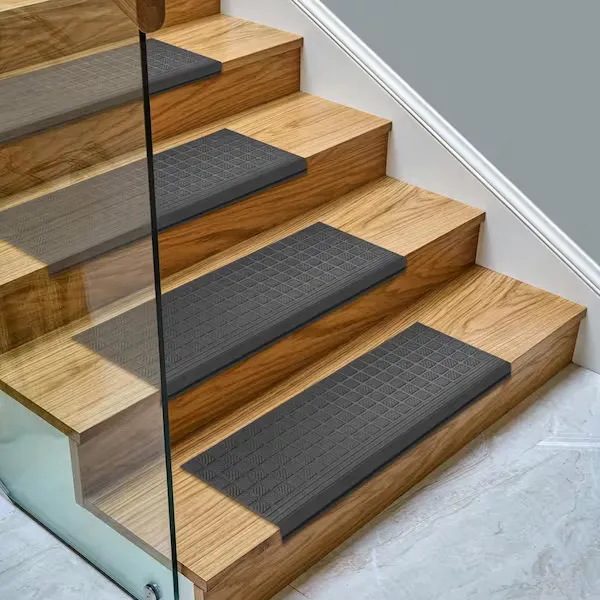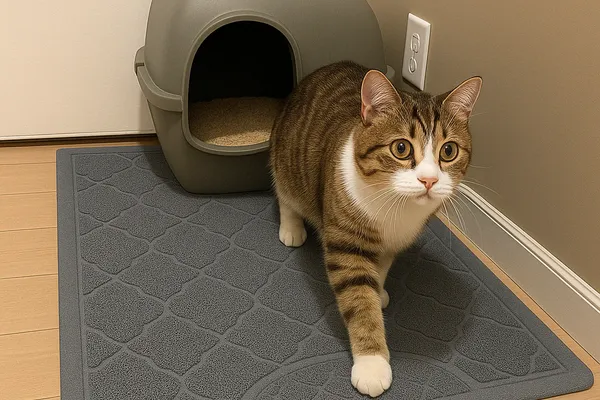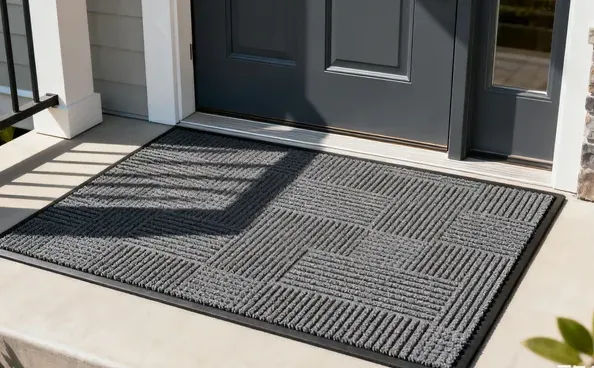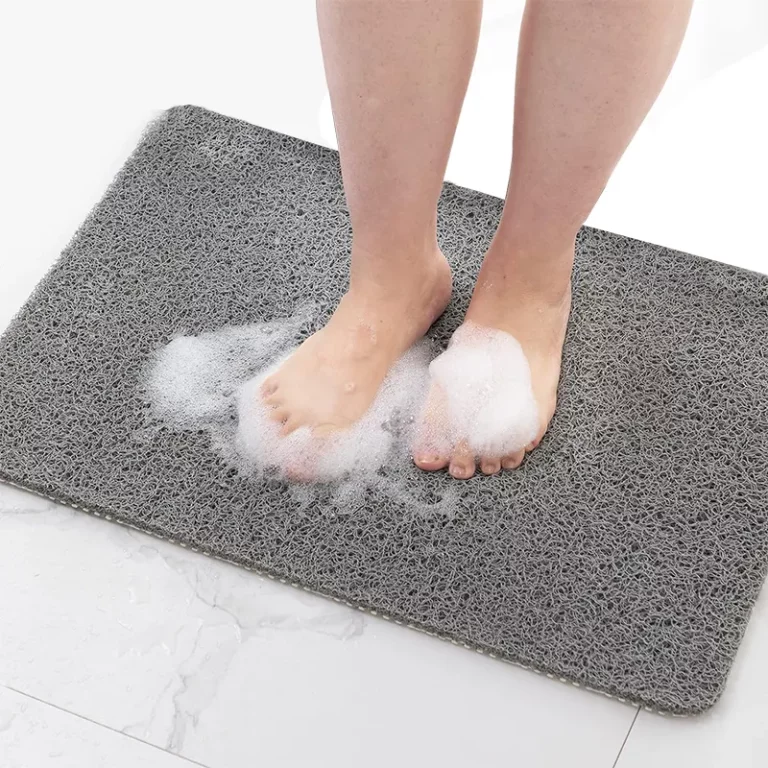Falling down stairs is scary. When your foot slips, you can get hurt bad. This is a big problem in many places.
Stairs Can Be Very Dangerous
Stairs cause many people to fall and get hurt. Wet oder oily stairs make people slip. When this happens, you might break bones or hurt your head. Some people even die from falling on stairs.
Look at these facts:
- 70% of stair accidents happen because steps are too slippery
- People with anti-slip treads have 74% fewer injuries on stairs
- Workers get hurt less when stairs have good treads
Stairs in factories, homes, Und public buildings need to be safe.
Why This Problem Gets Worse
When stairs stay slippery, the risk grows. Think about these cases:
- Wet feet make slips more likely
- Oil from kitchens makes stairs extra slippery
- Ice on outside steps can make anyone fall
- Old treads lose their grip over time
Der weather makes outdoor stairs even more dangerous. Rain, snow, and ice make steps very slippery. This puts everyone at risk. People who work in places with stairs face this danger every day.
Rutschfeste Treppenstufen
Anti-slip stair treads fix this problem! These special covers go on steps to stop people from slipping. They work by making the step surface rough instead of smooth. This roughness helps your shoes grip the step, even when it’s wet.
| Nutzen | Wie es funktioniert | Real Result |
|---|---|---|
| Stops slips | Rough surface grips shoes | 57% fewer accidents |
| Lasts long | Made from strong materials | Works for years |
| Meets rules | Follows safety laws | Keeps buildings legal |
| Saves money | Prevents costly accidents | $4 saved for every $1 spent |
Types of Anti-Slip Stair Treads
There are many kinds of rutschsichere Treppenstufen. Each works best for different stairs:
- Treppenstufen aus Gummi – Good for wet places, last 5-7 years
- Aluminum tread covers – Best for heavy use, last 10+ years
- Composite safety treads – Great for public buildings, last 8+ years
- Carborundum strips – Work in busy areas, need replacing every 3-5 years
- PVC anti-slip strips – Easy to put on, good for homes
The best tread depends on your stairs and where they are. Some work better outside, others inside. Some are best for homes, others for factories.

How Anti-Slip Treads Work on Different Surfaces
Different stairs need different treads:
Concrete Stairs
Concrete steps need abrasive strips or special adhesive treads. These grip the hard surface and don’t come off easy. They help water flow away too.
Wood Stairs
Wood steps need non-skid rubber oder PVC options with grip patterns. These won’t hurt the wood but still stop slips.
Metal Stairs
Metal needs serrated aluminum oder galvanized steel treads with holes for water to drain. These won’t rust and stand up to heavy use.
Outside steps need treads that don’t break down in sun or rain. Indoor steps need treads that look nice and stay clean.
What Makes Quality Anti-Slip Stair Treads
Good treads have these things:
- High friction surface that grips well
- Strong materials that last a long time
- Leicht zu reinigen so they stay working well
- Right size to cover the whole step
- Good looks that match your building
The best treads are made in factories with strict Qualitätskontrolle. This makes sure every tread works right and lasts long.
Safety Rules for Stairs
Steps must follow safety rules. OSHA says stairs must have a slip resistance of 0.50 COF or better. This is a measure of how grippy the step is.
Tests show many regular steps fail this test when wet. Only 45% pass! But good anti-slip treads can make any stair pass these tests.
Safety yellow treads help people see steps better. This helps stop trips too.
How to Choose the Right Anti-Slip Stair Treads
Picking the right treads means thinking about:
- Where are your stairs? Inside or outside?
- Who uses your stairs? Workers? Kids? Old people?
- What are your steps made of? Wood? Concrete? Metal?
- How much can you spend?
- How do you want them to look?
For busy stairs – Choose treads that can handle lots of feet.
For outside stairs – Pick treads that won’t break in sun or ice.
For home stairs – Look for treads that look nice and feel good on feet.
The right tread makes steps safer without making them ugly or hard to use.

Putting On Anti-Slip Stair Treads
Putting treads on right is very important. If you do it wrong, they might come off and cause falls!
Steps to Put on Treads:
- Clean the step – Remove dirt, oil, and old paint
- Measure twice – Cut treads to fit steps exactly
- Put on glue – Use the right glue for your step material
- Press hard – Make sure the tread sticks all over
- Let dry – Wait long enough before using stairs
62% of tread failures happen because people don’t clean the step right or use the wrong glue. This costs 4.2 times more to fix than doing it right the first time!
Benefits for Different Places
Anti-slip treads help in many places:
Food Places
Restaurants see 79% fewer accidents after putting in treads. Oil and grease make kitchen stairs very slippery. Good treads fix this problem.
Old People’s Homes
Rutschfeste Treppenmatten help older people stay safe. They reduce falls by making steps easier to use without slipping.
Ice-Prone Areas
Special rubber treads with grit work even when icy. This keeps entry ways safe in winter.
Industrial Sites
Strong aluminum treads with drainage last in factories. They stand up to chemicals and heavy boots.
Every place has different needs, but all can be safer with the right treads.
Keeping Your Treads Working Well
Treads need care to keep working:
- Clean them – Wash off dirt and oil
- Check for wear – Look for smooth spots where grip is gone
- Replace worn treads – Don’t wait until someone falls
- Follow maker’s rules – Use right cleaners
Good treads last years if you take care of them. But even the best treads need to be changed when they wear out.
Making Anti-Slip Stair Treads: The Factory Process
Quality anti-slip stair treads come from good factories. At places like Jincheng Carpet, the process has many steps:
- Raw materials arrive – PVC, polyester fiber, polypropylene
- Mixing happens – Materials blend to make strong compounds
- Forming shapes the treads – Machines press materials into tread shapes
- Pattern making – Grip patterns get added to the surface
- Aushärtung makes treads strong – Heat sets the materials
- Testen checks quality – Slip tests make sure treads work
- Verpackung gets treads ready to ship – Proper boxing prevents damage
Mit 20+ Produktionslinien Und over 100 skilled workers, factories can make many types of treads. This lets them make the right tread for any step.
Materials That Make Treads Work
The best treads use special materials:
- Gummi keeps grip even when wet
- aus PVC lasts long and resists chemicals
- Polyester fiber feels good but still grips
- Aluminum stands up to heavy use
- Galvanized steel doesn’t rust outside
Tests show rubber treads maintain 0.61-0.68 COF after sun exposure. This beats metal treads that drop to 0.53 COF. This means rubber keeps working better outside.
Common Questions About Anti-Slip Stair Treads
Can I put treads on carpet stairs?
No – this can cause fire risk and doesn’t work well.
Do treads work on spiral stairs?
Yes, but you need to cut them to fit the special shape.
Are treads safe for pet paws?
Smooth-rubber options are best for pets.
Can I use treads in my apartment?
Yes! Look for treads with non-damaging glue that won’t hurt the steps.
How long do treads last?
Good treads last 3-10 years depending on the type and how many people use the stairs.
The Science of Slip Prevention
Anti-slip treads work because of friction. Friction is what keeps your feet from sliding. More friction means less slipping.
Treads add friction by:
- Making tiny bumps your shoes can grip
- Moving water away so your foot touches the step
- Adding rough bits like sand or grit to grab shoes
The best treads have a COF (coefficient of friction) over 0.50. This means they grip well even when wet or oily.
Why Choose Carpet Stair Treads?
Carpet treads combine safety and comfort. They:
- Stop slips with their grip texture
- Feel soft on bare feet
- Look nice in homes
- Come in many colors
- Last for years with good care
For homes, carpet treads make stairs both safe and nice to look at.

Is Your Factory Making Quality Treads?
Good factories make treads that:
- Meet ISO9001 Und REACH rules
- Pass slip testing Und wear testing
- Keep their grip for years
- Look good and work well
- Can be shipped anywhere
When treads are made right, they save lives by stopping falls. Poor quality treads can fail and cause the very accidents they should prevent.
Summary: Why Anti-Slip Stair Treads Matter
Slippery stairs cause many bad falls. These falls hurt people and cost money. Anti-slip stair treads fix this problem by making stairs safer.
With the right treads:
- Falls drop by more than half
- Injuries cost much less
- People feel safer
- Buildings meet safety rules
Whether you need treads for a home, a restaurant, or a factory, the right anti-slip stair treads save money and keep people safe. Prevention is always better than dealing with injuries after falls.





